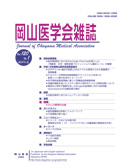

Journal of Okayama Medical Association
Published by Okayama Medical Association<Availability>
Full-text articles are available 3 years after publication.
Permalink : http://escholarship.lib.okayama-u.ac.jp/13715
2β-(3-Hydroxypropoxy)1α,25-Dihydroxyvitamin D(3)(ED-71), increases bone mass by stimulating bone formation in hypophosphatemic mice
Ochi, Hideaki
Published Date
1998-06-25
Abstract
To determine the effects of ED-71, a new active vitamin D3 analogue, on bone, we examined the action of ED-71 and 1α,25(OH)(2)D(3), using hypophosphatemic (Hyp) mice, a model for X-linked hypophosphatemic rickets in humans. ED-71 has the unique characteristics of a longer half-life in serum, a higher binding affinity to serum vitamin D binding protein and lower affinity to the vitamin D receptor than 1α,25(OH)(2)D(3). Hyp mice were treated with 10-1200
pmol/kg/day of ED-71, 40-400 pmol/kg/day of 1α,25(OH)(2)D(3), or the vehicle alone, administered daily for 21 days by subcutaneous injection. ED-71 at doses of 100-400 pmol/kg/day, dose-dependently effects in increased bone size and bone mineral density (BMD) without causing hypercalcemia. However 1α,25(OH)(2)D(3) at a dose of 400 pmol/kg/day, demonstrated only slight increases in bone size and BMD with hypercalcemia. These findings suggest that ED-71 may be more beneficial in the treatment of X-linked hypophosphatemic rickets than 1α,25(OH)(2)D(3).
Keywords
ED-71
Hyp mouse
BMD
Ca
Note
原著
ISSN
0030-1558
NCID
AN00032489
